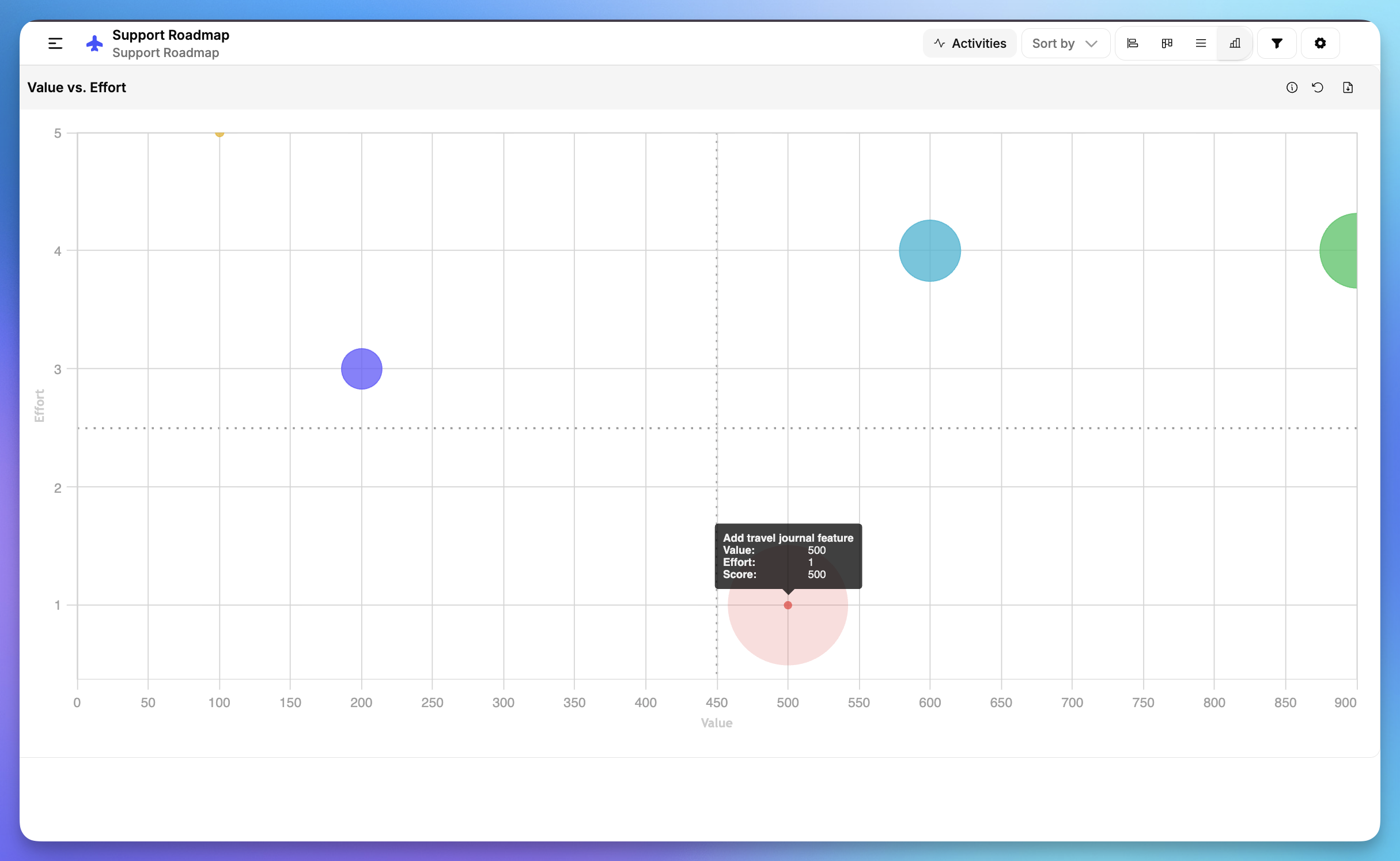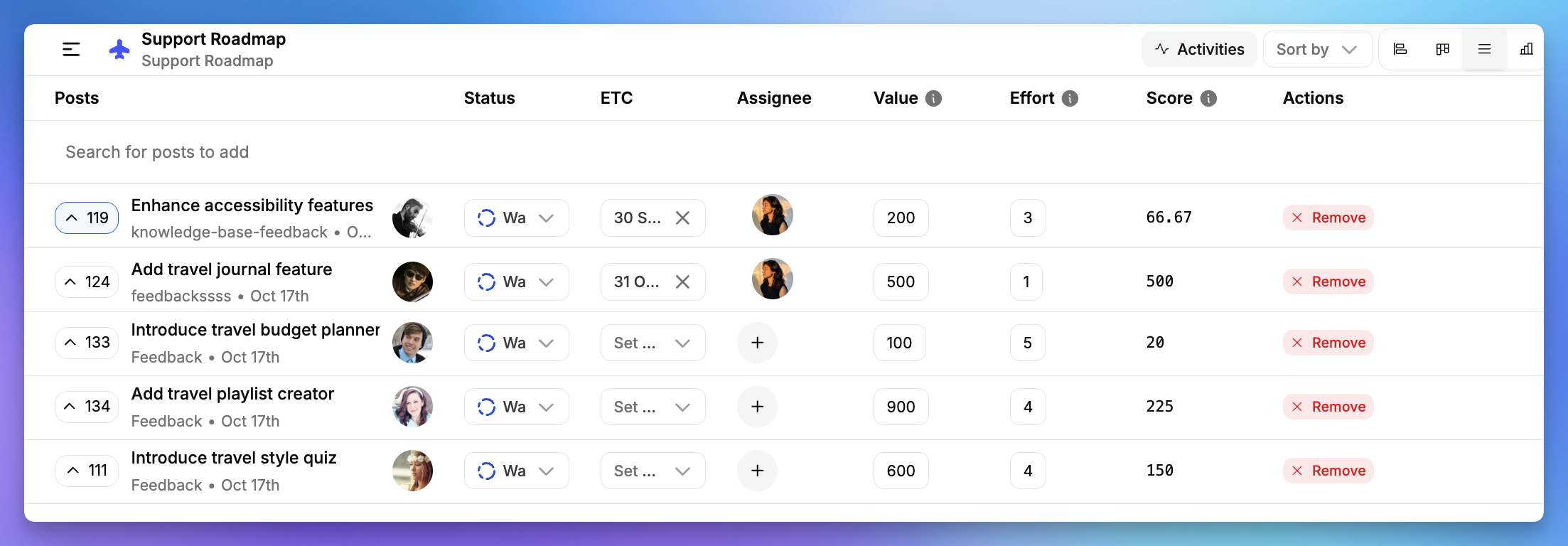Prioritization is tricky - There are more ideas, requests, and improvements than any team can take on at once. At FeatureOS, we wanted to make this process easier, more transparent, and less about gut feel. That’s why we built two prioritization tools right into your roadmap: R.I.C.E. scoring and Value vs. Effort.
Here’s how we think about them - and how you can put them to work for your team.
R.I.C.E. Scoring
Why it exists
Sometimes you need a structured, numbers-driven way to compare one idea against another. R.I.C.E. helps bring that structure by asking four simple questions:
Reach: How many people will this affect? (e.g. 200 users this quarter)
Impact: How much will it help those people? (from a small improvement to a game-changer)
Confidence: How sure are you about your reach and impact estimates?
Effort: How much work will it take? (measured in person-weeks, story points, or however your team estimates)
Formula
(Reach × Impact × Confidence) ÷ Effort
Example
Slack integration for feedback notifications | Dark mode for the dashboard |
|---|---|
|
|
Even though Dark Mode is popular, the Slack integration clearly gives more ROI. That’s the kind of clarity R.I.C.E. is meant to bring.
With FeatureOS, you just fill in the fields, and we calculate the score for you. Then you can sort by score and quickly see what rises to the top.

Value vs. Effort Scoring
Why it exists
Sometimes you don’t need math - you just need a quick, shared sense of what’s worth doing. Value vs. Effort is a simple 2×2 grid that helps you and your team spot quick wins and avoid time sinks.
Value: How much this helps customers or the business.
Effort: How big of a lift is this for the team.
Example
In the screenshot below, you can see a Value vs. Effort view of a roadmap.
Each bubble is a feature idea, plotted based on how much value it delivers (x-axis) versus how much effort it requires (y-axis). The size of the bubble reflects the relative score or weight of that item.
Take the “Add travel journal feature” as an example:
Value: 500 (high benefit for users who want to track and share trips)
Effort: 1 (relatively low build time)
Score: 500
This puts the feature firmly in the “Quick Win” quadrant: high value, low effort.
From a prioritization standpoint, this is the type of initiative you’d want to greenlight early - it gives your users something meaningful without taking much from your team.

Alongside the visual chart, FeatureOS also gives you a simple table view where you can assign Value and Effort scores to each feature. Here,
Enhance accessibility features → Value 200, Effort 3 → Score 66.7
This shows up as a moderate value, moderate effort.
Add travel journal feature → Value 500, Effort 1 → Score 500
A clear, quick win: very high value, minimal effort.
Introduce travel budget planner → Value 100, Effort 5 → Score 20
Low priority: high effort for little value.
Add travel playlist creator → Value 900, Effort 4 → Score 225
A big bet: high value, but needs more resources.
Introduce travel style quiz → Value 600, Effort 4 → Score 150
Nice-to-have: useful, but not as strong as other options.

From here, your team can quickly identify which initiatives to prioritize, which to plan later, and which may not be worth pursuing at all.
When to Use What
Need more help?
Reach out to our support at [email protected] or submit a request on our support board! 😃
Was this helpful?
